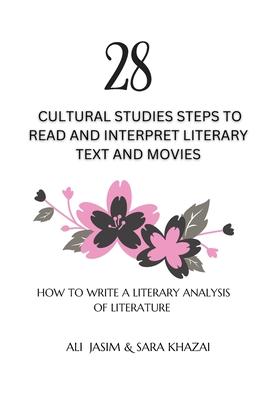✓This study contains steps that enable readers and researchers to read and interpret literary texts and films and interpret the implicit meanings behind lines and scenes. These steps are in the form of questions and answers with examples. These questions will enable the reader to apply cultural studies to literary texts, even if the reader's analytical levels are modest. This content begins with a chapter on using cultural studies and deciphering the codes in literary texts and films in a simplified manner. This study included work on the application of a wide range of terms related to cultural studies, such as the growth of identities, sexist beliefs, coding, decoding, mass culture theory, dominant, negotiated, oppositional reading, agency, indoctrinated, working-class immobility, capitalist ideologies, connotations, modern myths, preferred ideologies, interdisciplinary, racism, and cultural encounter, cultural prejudice, disability, subculture, race, ethnicity, religion, class or gender, relative autonomy, complete autonomy Etc. The study used all of what was mentioned in the practical steps to enable the reader to project the cultural studies on any literary text or film. The reader will also be able to reveal the cultural contents that formed the text. By practising these steps in this text, you will be able to analyze easily and reach a deeper meaning than the apparent meaning that the rest of the readers receive from literary texts. This study included practical chapters on reading and interpreting literary texts and films.
★Chapters details for this content
♦️Chapter One: Contains 28 steps or questions to apply the theory to a literary text or film.
♦️Chapter Two: Contains interpretation and a literary commentary on Arthur Miller's A View from the Bridge (1955) by applying Cultural Studies Steps.
♦️Chapter three: Contains interpretation and a literary commentary on Shakespeare's As You like It (1623) by applying Cultural Studies steps.
♦️Chapter Four: Contains interpretation and a literary commentary on Henrik Ibsen's A Doll's House (1879) by applying Cultural Studies steps.
♦️Chapter Five: Contains interpretation and a literary commentary on Markus Zusak's The Book Thief (2006) applying Cultural studies steps.
♦️Chapter Six: Contains interpretation and a literary commentary on the movie Orphan Horse (2018) by applying Cultural Studies Steps.
★These chapters above, including applying theory to literary texts and film, will facilitate the transition from theory to practice. The first chapter is a tutorial on using the theory in books and movies.
★Each of these texts and film above included its analytical chapter by applying cultural studies to it. Thus, it became easy for the reader and viewer to read and interpret; fictional texts and non-fiction can be analyzed.
